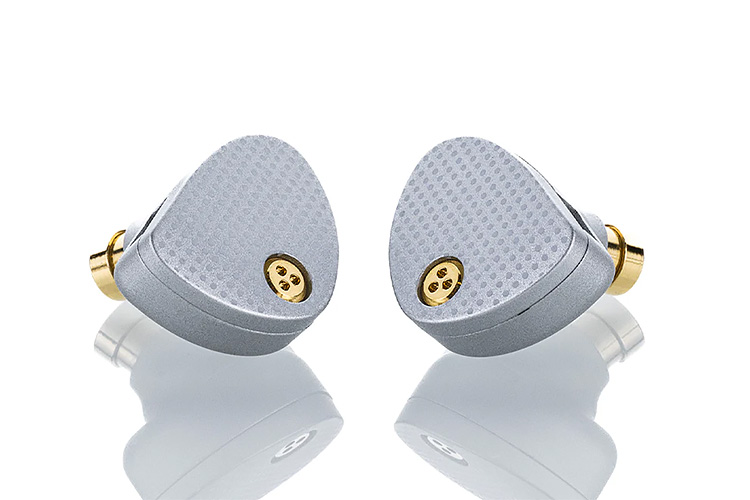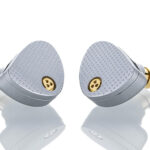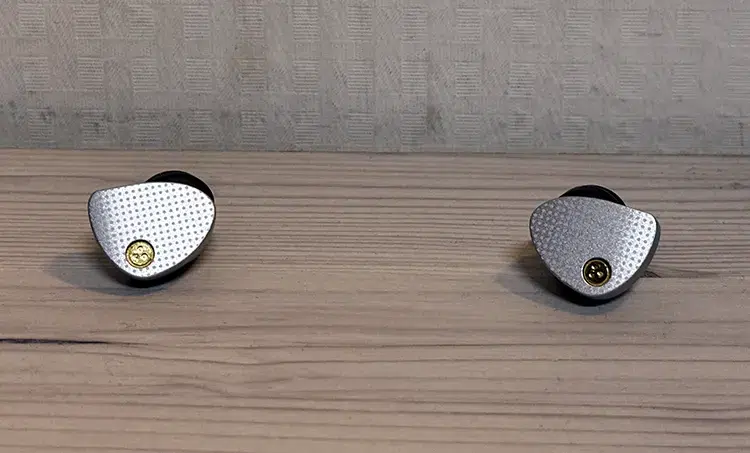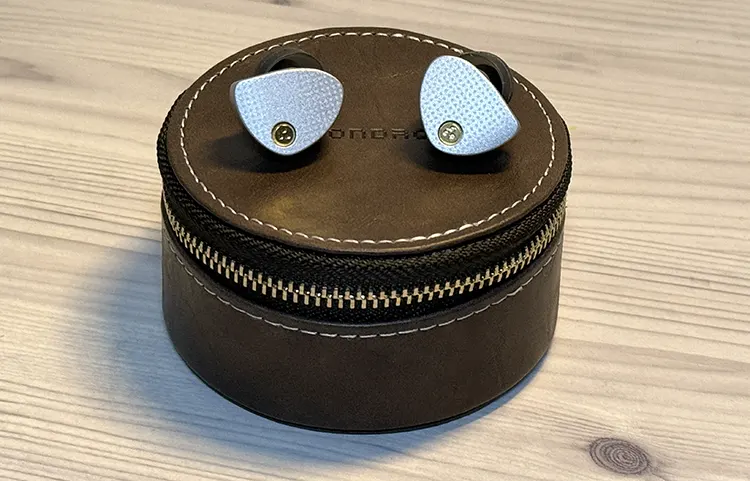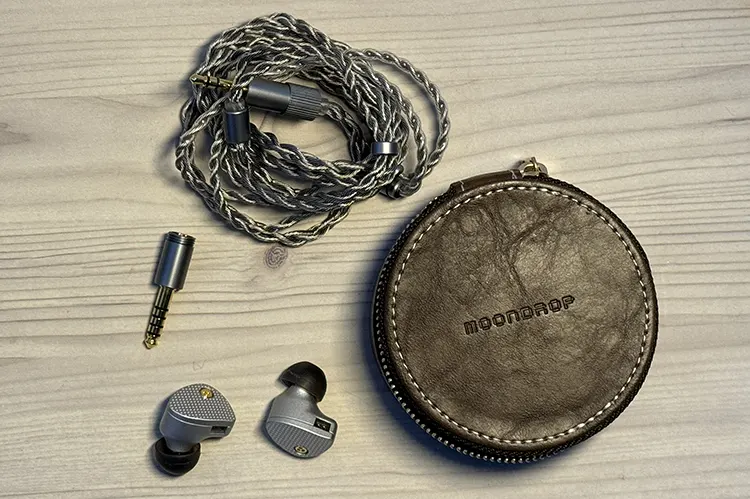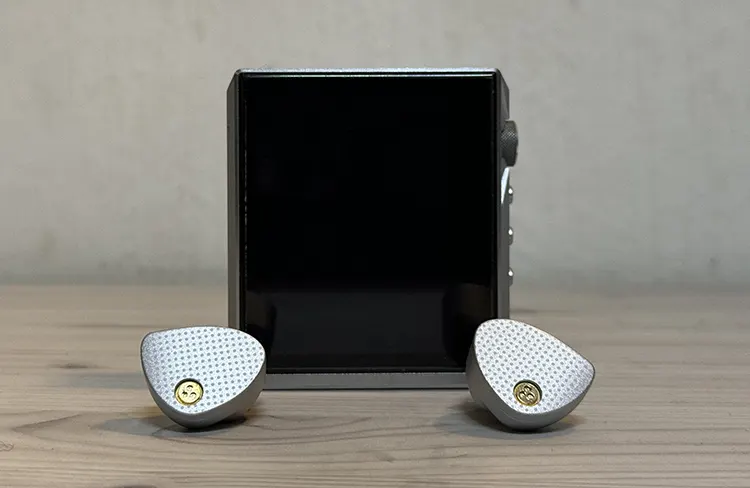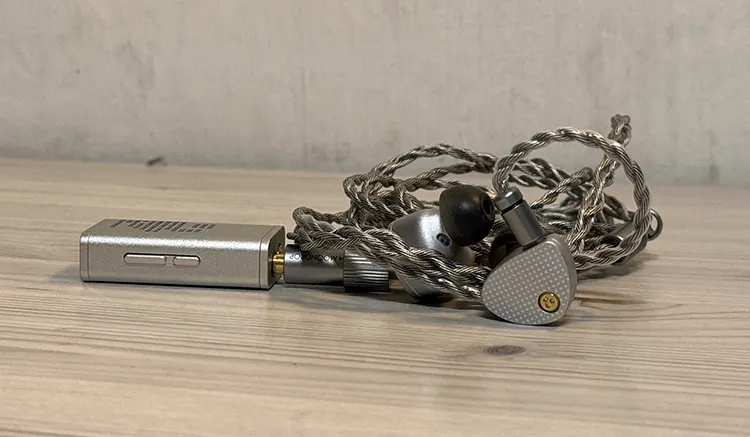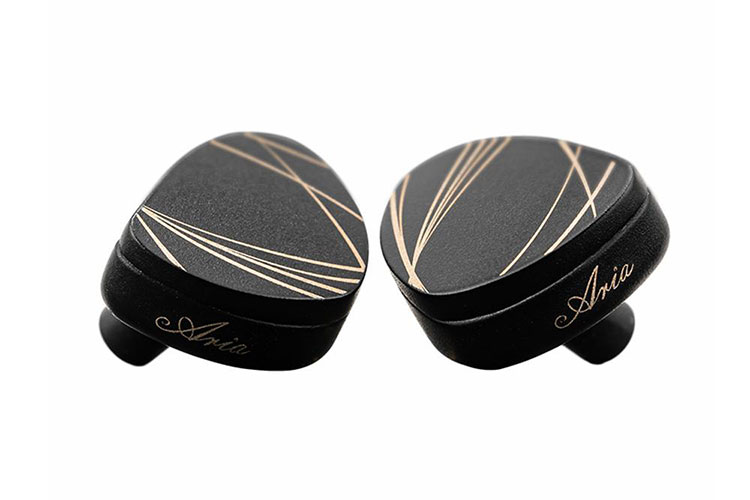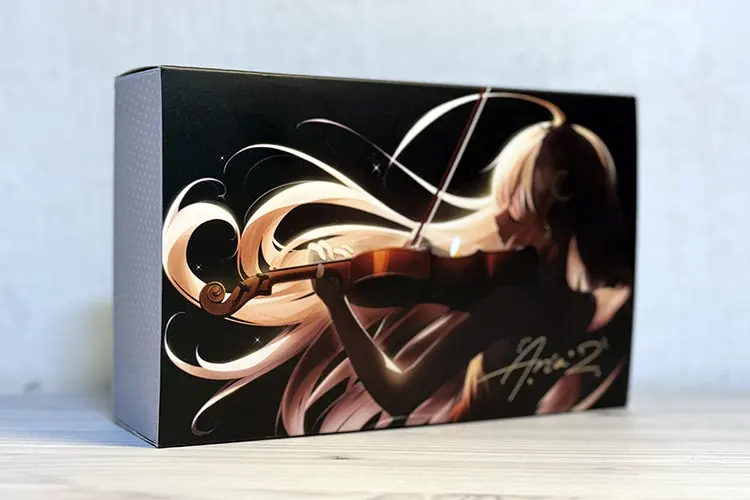In this feature, we review the MOONDROP Aria 2, the 2nd generation of the brand’s popular budget single-driver universal in-ear monitor. It is priced at $89.99
Disclaimer: This sample was sent to us in exchange for our honest opinion. Headfonics is an independent website with no affiliate links or status. We thank MOONDROP and Shenzhen Audio for their support.
Click here to read more about MOONDROP products we have previously featured on Headfonics.
Note, that this article follows our current scoring guidelines which you can read here in more detail.
The Aria 2 is the latest entry-level single dynamic driver IEM offering from MOONDROP. After 2 years, MOONDROP has finally dropped the Aria 2, an update of the Aria and Aria Snow previously released in 2021.
The Aria 2 adopts a new acoustic cavity, along with an update of the DD driver structure. It also has a new TiN ceramic-coated spherical dome composite diagram which improves its treble response and lower distortion performance.
It’s also now built like a tank with its alloy-casted precision-milled housing. The nozzle is upgraded to a separate and replaceable brass component, resembling the KATO.
Despite the upgrades, It still has the same tuning that Aria fans will love – the tuning of the Aria MKI with a frequency response in line with the VDSF target response.
I was surprised with the cable plug design that can be changed to both 3.5mm and 4.4mm. It’s a bargain for a sub-$100 iem to give this option to its consumers, which is a plus in my opinion.
Tech Highlights
The MOONDROP Aria 2 is a single 10mm dynamic driver universal monitor. Unlike the Aria 1 and Aria 2, it continues to have a different driver inside.
The Aria 2 has a TiN ceramic coated spherical dome composite diaphragm with MOONDROP’s composite magnetic circuit and composite independent brass cavity usually seen in mid-range competitors. This technology achieves a smooth treble response and ultra-low distortion.
There is no mention of the ultra-fine imported Daikoku CCAV voice coil that is used in both the original Aria 1 and Aria Snow Edition.
What’s assuring is that the driver tuning is still consistent with MOONDROP’s signature VDSF tuning curve.
Design
Judging from the shape of the shell, not much has changed from the previous Aria 1. It still has the same ergonomic shape but it does have a completely different vibe into it. It’s now colored in a grey-titanium matte finish, which looks really well-built.
Up close, the design is with a dotted pattern, similar to the printed box it came with. I’m quite impressed with the progression of the look of the Aria series from MOONDROP.
Comfort & Isolation
I’ve never had problems with the fit of the Aria IEMs. Since they’re all the same shape and size, the Aria 2’s fitted pretty well with my ears. It’s small enough to be comfortable and not touch the side of my ears.
I expected more with the stock tips for the Aria 2. I really like the spring tips that were introduced with the KATO and Aria Snow Edition. The Aria 2 only has the stock silicon tips included. They seal well enough to work through a café or drown out white noises.
Stock Cable
The Aria 2 comes with a copper and silver-plated Litz cable. It is terminated with a 2-pin 0.78mm and an interchangeable 3.5mm and 4.5mm straight jack.
The cable is a thick braided cable, complementing the overall IEM design. It does not tangle easily, although it has a bigger carry footprint as the case is also bigger compared to the previous generations.
Packaging & Accessories
The outside packaging is similar to its predecessors with a splashed anime character in front. Gone are the magnetic flaps, with its simple box design.
What surprised me was the better organization inside, as well as the leatherette brown carry case is a very needed improvement from the previous generations. The whole package contains a brown leatherette carrying case, interchangeable IEM cable with 3.5mm and 4.4mm tips, and 3 sets of ear tips S, M, and L.
Sound Impressions
To be completely honest, I am not expecting much of a difference between the AariaMKI and Aria 2 in terms of the sound response. It has the same VDSF tuning, with upgrades with the tech inside. I expect overall lower noise distortion, and perhaps better bass response.
Bass
I wasn’t really expecting much bass as the Aaria MKI and Aria Snow Edition didn’t really deliver much bass. However, there is a noticeable improvement with the Aria 2 with a deeper thump and meatier bass.
The Aria 2 is not necessarily a bass monster, but it does provide adequate bass to be enjoyed. It’s still not as impactful as I desire it to be. Despite the still recessed sub-bass, the mid-bass region is consistently better.
It has a quick response with no excessive bloom. The upper frequencies experience no bloom or any distortion. The mid-bass still has a noticeable presence, allowing for each thump to be heard, even with busy tracks.
Mids
The mids on the Aria 2 are generally well-balanced. It is neither recessed nor overly forward, just right, which goes well with the overall tuning.
The lower and upper midrange strikes a good balance, with no noticeable drops between both male and female vocals. It is noticeable that the midrange presents a clear and crisp response. In particular, female vocals shine with an airy texture in both ballad and pop genres.
The Aria 2 has improved with lower distortion, enabling transparent vocal layering and recognizable layers even with overlapping vocals.
Instruments are also rendered with accuracy, showing their natural tonality. Although, compared to the vocals, the instruments take a back seat, letting the vocals shine more.
Treble
The treble is tuned comfortably, rather than aggressively. It’s not as energetic as the previous version but performs well overall. This tuning is consistent with MOONDROP’s house sound with the VDSF tuning.
It extends well to have a certain brilliance across different tracks. It also has a good level of control. Female tracks extend well, with no noticeable drops as they extend to higher frequencies.
Hi-hats do lack sparkle, but still noticeable when listening in. It does tend to blend in the background, lacking the attention it deserves to get.
Staging & Imaging
Similar to the previous models, the Aria 2’s staging is continuously impressive. It exceeds the expectation from a sub-$100 IEM. It may not have expansive depth and height, but it’s just right to have a good headspace when listening.
Imaging is also fairly accurate. It does well on busy tracks with multiple layers. It does not sound flat, but distinct and 3 dimensional, where sound travels in different directions.
Synergy
Efficiency
With an impedance of 33Ω, the Aria 2 is not difficult to drive with smartphones. They are good enough to power IEMs at decent volumes. Pairing with portable DAC/AMP and dedicated audio players does extend its overall imaging and soundstage.
Pairings
This monitor is tuned to MOONDROP’s VSDF tuning, which is a highly versatile sound signature. For my personal use, I would pair this monitor with a source that is more bass-heavy to increase its bass response.
For mobile phone users, the MOONDROP Dawn Pro dongle DAC comes into mind as a good pairing with the Aria 2. Aside from aesthetics, it does boost the bass response of the Aria 2, giving it a more overall depth.
The Hidizs AP80 Pro-X is also a good choice as it does boost lower frequencies while maintaining a good midrange timbre. This combination will further enhance the tonality and lower end of the Aria 2. The MSEB function can further increase the bass if the stock option does not suffice.
Select Comparisons
MOONDROP Aria 1
Technical
Both monitors have a single dynamic driver design. However, their internal components differ. The Aria 1 has a 10mm LCP diaphragm dynamic driver, whereas the Aria 2 has a TiN ceramic-coated dome composite diaphragm dynamic driver.
The Aria is famous for having the lightweight Daikoku CCAW voice coil that is manufactured in Japan. There is no mention of the said coil with the Mark 2.
Design
Despite having similar ergonomically shaped shells, the designs are quite contrasting. The Aria 1 has a matte-black finish, while the Aria 2 has a silver-titanium-like color. The vibe between the two is completely different.
The main gripe from the Aria 1 is its build quality. The cable tangles easily, as well as the shell does tend to chip rather easily. The new Aria 2 has a better build, with also a better cable.
Both IEMs have an ear-hook design with a 2-pin 0.78mm termination. The cable on the Aria 2 is a braided cable with an interchangeable cable jack -3.5mm and 4.4mm, whereas the Aria 1 is a fixed 3.5mm L-shaped plug. In terms of comfort, there is no difference. The tips of both IEMs are also quite similar.
Performance
Both monitors carry the same VDSF-target tuning which MOONDROP is known for. Although, they have their differences, given the advancement and technologies that are different inside.
The lows on the Aria 2 have a deeper thump and rumble compared to the Aria 1. The Aria 2, although not a bass-heavy monitor, still gives the bass more presence with both its sub-bass and mid-bass. The Aria can give an adequate bass response but the Aria 2 does it better with its overall body.
The midrange is better on the Aria 2 compared to the Aria 1. Although the Aria 1 is already impressive as it is, the Aria 1 tends to be veiled at times. The Aria 2 has better clarity where details are better heard especially when listening in for longer periods. Midrange feels more transparent and pleasant to listen to.
Treble on the Aria 1 is on the energetic side, which can be fatiguing for some. The Aria 2 is updated with tamer highs, and relaxed a bit to avoid sharpness, especially with cymbal crashes.
Both soundstage and imaging are also improved on the Aria 2. This is apparent with its more expansive soundstage and impressive levels of clarity which enhances the imaging, with a better overall 3D feel of the music.
MOONDROP Aria Snow
Technical
The Aria Snow and Aria 2 both have a single dynamic driver design. The Snow has a DLC diaphragm while the Aria 2 with a TiN ceramic-coated dome diaphragm.
The Aria Snow also has the lightweight Japanese Daikoku CCAW voice coil while the Aria 2 has a new composite magnetic circuit composite independent brass cavity.
Design
In terms of color, these 2 IEMs are very alike. They are built with a grey-like titanium color. However, the vents on the Aria 2 appear to be different from the Aria Snow. Looking at the 2 side by side, they look very similar with differences in the faceplate design.
Both IEMs have a 2-pin 0.78mm termination on the IEM side. The cable on the Aria 2 is a braided cable with interchangeable termination -3.5mm and 4.4mm while the Aria Snow has a fixed L-shaped plug.
Comfort and isolation with the Snow compared to the Aria 2 are better thanks to the included spring tips.
Performance
VDSF-target tuning, which MOONDROP is known for, can still be found in both of these monitors. Despite having the same target tuning, they still vary in performance, perhaps because of the difference in diaphragm compositions.
The bass on the Aria 2 is deeper than what the Aria Snow replicates. The Aria 2 has more presence – both in sub-bass and mid-bass where the Aria Snow misses. The lows on the Aria Snow feel recessed when comparing it side by side with the Aria 2.
Aria 2 still has a better midrange than the Aria Snow. Although the Aria Snow has already impressive clean mids, the Aria 2 has a subtle lower distortion, which makes vocals feel more transparent and articulate.
Treble response on both monitors is quite similar. They are quite tamed and laid-back, where cymbals can be heard comfortably without a sharp feeling.
The soundstage is quite similar between the two monitors. They have comparable widths, with the Aria 2 having more depth. Both have relatively accurate imaging, with a multi-directional feel with various tracks.
Our Verdict
It’s amazing to see how the MOONDROP Aria line has improved over the years. For a sub-$100 IEM, it has surpassed the value to be gained over the years with lower distortion and better clarity.
The Aria 2 still punches above its price range by offering good tuning, better build quality, and better cable with the bonus of the ability to swap termination to a balanced set-up right out of the box.
If you’re in the market for your first IEM, the Aria 2 is a no-brainer with the value this monitor brings. Given the competition in this price range, variability will boil down to personal preference, however, Aria 2 is very hard to dislike.
MOONDROP Aria 2 Technical Specifications
- Product Name: MOONDROP Aria 2
- Sensitivity: 122dB/Vrms (@1kHz)
- Impedance: 33Ω±15% (@1kHz)
- Frequency Response Range: 16Hz – 22kHz (IEC61094, Free Field)
- Effective Frequency Response Range: 20Hz – 20kHz (IEC60318-4, -3dB)
- Earphone Jack: 0.78-2pin
- THD+N: THD≤0.05% (@1kHz)
- Cavity Material: Zinc Alloy Cavity + Brass Nozzle
- Plug: 3.5mm single-ended




